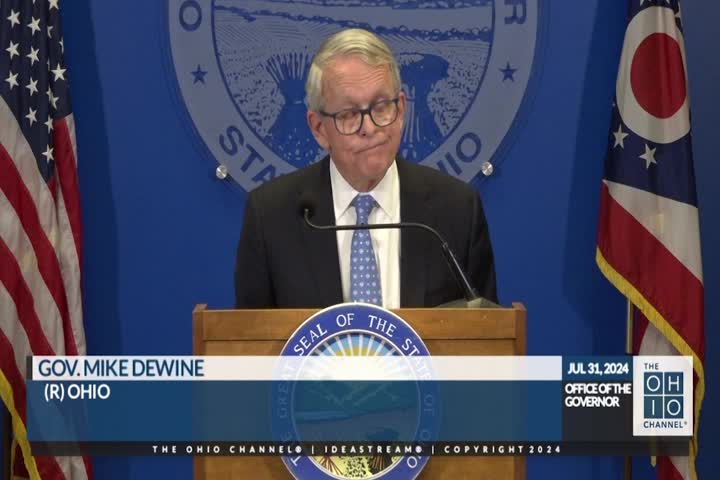Governor warns against extreme gerrymandering in Ohio proposal
July 31, 2024 | Governor Mike DeWine, Office of the Governor , Executive Offices, Organizations, Executive , Ohio

This article was created by AI summarizing key points discussed. AI makes mistakes, so for full details and context, please refer to the video of the full meeting. Please report any errors so we can fix them. Report an error »

In a recent government meeting, Ohio officials engaged in a heated discussion regarding the state's redistricting process, with significant concerns raised about the proposed maps and their implications for political representation. Critics argued that the current proposal lacks proportionality, failing to reflect the political balance of Ohio and potentially leading to unbalanced legislative outcomes.
One official emphasized that the proposed plan aligns with the classic definition of gerrymandering, suggesting that it manipulates district boundaries to favor specific political outcomes. This sentiment was echoed by others who expressed skepticism about the fairness of the maps, arguing that they could disenfranchise independent voters who are unable to participate in primary elections.
The conversation also touched on the potential for a new redistricting plan to be presented to voters in the upcoming November ballot. Officials expressed hope that voters would reject the current proposal, paving the way for a more equitable system. However, there was a palpable sense of urgency, as some officials noted that time was running out to enact any legislative changes before the election.
Concerns were raised about the influence of external funding on the opposition campaign against the proposed redistricting changes, with officials urging voters to scrutinize the sources of this financial support. The meeting concluded with a recognition of the complexities involved in redistricting and the need for a transparent process that truly represents the will of Ohioans.
As the November vote approaches, the discussions underscore the critical nature of redistricting in shaping Ohio's political landscape and the ongoing debate over how best to achieve fair representation for all voters.
One official emphasized that the proposed plan aligns with the classic definition of gerrymandering, suggesting that it manipulates district boundaries to favor specific political outcomes. This sentiment was echoed by others who expressed skepticism about the fairness of the maps, arguing that they could disenfranchise independent voters who are unable to participate in primary elections.
The conversation also touched on the potential for a new redistricting plan to be presented to voters in the upcoming November ballot. Officials expressed hope that voters would reject the current proposal, paving the way for a more equitable system. However, there was a palpable sense of urgency, as some officials noted that time was running out to enact any legislative changes before the election.
Concerns were raised about the influence of external funding on the opposition campaign against the proposed redistricting changes, with officials urging voters to scrutinize the sources of this financial support. The meeting concluded with a recognition of the complexities involved in redistricting and the need for a transparent process that truly represents the will of Ohioans.
As the November vote approaches, the discussions underscore the critical nature of redistricting in shaping Ohio's political landscape and the ongoing debate over how best to achieve fair representation for all voters.
View full meeting
This article is based on a recent meeting—watch the full video and explore the complete transcript for deeper insights into the discussion.
View full meeting
